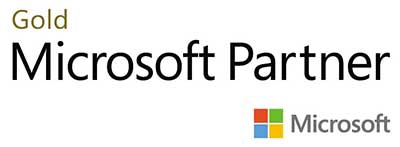What is Internet of Things?
In simple terms, IoT means a large number of devices interconnected with each other via the internet and simultaneously sharing information with each other. With internet services become widely available throughout the world the number of devices running on the internet is increasing day by day.
For example, your home assistant Alexa is interconnected to various objects like mobile, speakers and other electronic items. When you command “Alexa play Summer of 69 for me” then Alexa sends information to your mobile phone and your mobile analyses the information and play the song. So, two systems are interacting with each other without any human interaction. Billions of devices everyday interact with each other and share information.
History of the Internet of Things
Let’s see how IoT evolved over several years and became daily part of our lives,
1844- The first telegraph message was sent from Washington D.C to Baltimore, by Samuel Morse.
1969- ARPANET was the first network to implement TCP/IP protocol suite and laid the foundation of the internet.
1989- Tim Berners Lee – invented the world wide web.
1990- John Romkey invented Internet Toaster. This was the first time IoT was implemented, by connecting the internet with a toaster.
1998- Intouch project started by MIT to develop new forms of interpersonal communication.
1999- Radio Frequency Identification (RFID), developed by Auto ID labs. It is a form of wireless communication that is used to detect objects.
2004- Internet of things, IoT now more commonly used and start to appear on various platforms like book, newspapers, etc.
2005- United Nations International Union publishes the first report based on the internet of things.
2008- IoT recognized by the European Union and the first European IoT conference held.
2009- The rise and rise of IoT as the number of devices connected to internet increased rapidly.
How IOT Work?
In technical terms, IoT is a complex connection of various devices interacting with each other. IoT can be broken down into four parts Sensors/Detectors, Connectivity, Data Analysis/Processing and User Interface.
1. SENSORS/DETECTORS
The sensors help to collect data/information from the process and analyzing it. For example, in the logistics industry the sensors are used to collect information from the packages.
2. CONNECTIVITY
There should be a medium to connect the devices. The devices can be connected via different channels like WIFI, LAN, Satellite, Bluetooth or connected directly to the internet.
3. DATA ANALYSIS/PROCESSING
Now the data is transferred it needs to be processed. The system analyzes the data and output is derived. For example, weather forecast systems analyze the data from different devices and determine the outcomes.
4. USER INTERFACE
The information analyzed must be sent in such a form that the end-user can understand it. For example, in a chemical factory when the temperature in the boiler goes above a certain limit then an alert will be sent to the Plant Manager.
Also Read: 8 Technology Trends For 2022
Advantages of Internet of Things
1. AUTOMATION
Everything is automated in IoT with very little human involvement. Without human intervention, the devices can easily communicate with each other and deliver faster responses.
2. MONITOR
Everything can be easily managed, modified and controlled by the user. The devices can be controlled easily from a centralized system and you can view the performance in real-time.
3. SAVES TIME
As almost everything is automated, the operations are performed simultaneously without any lag.
4. EFFICIENT
Chances of error are very less because it is a machine to machine interaction which helps to increase efficiency and transparency.
5. SAVES MONEY
By adopting this technology all the resources are utilized to full potential and optimized efficiently.
6. INFORMATION ACCESS
Data is the Gold of the 21st century and with IoT, the information is available easily. You can easily access information in real-time and helps you make better decisions.
Applications of Internet of Things
1. SMART HOME DEVICES
Now you can control everything at your home even when you are not at your home. IoT is improving the quality of life by making our life simple and convenient. So almost everything in your house can easily be monitored and managed with smart home applications
2. WEARABLES
It is probably one of the best applications of IoT. The latest Apple Watch has revolutionized wearable technology, it can predict if you are going to get heart attack by measuring various parameters and can even call the emergency number if you are unconscious, isn’t that amazing?
3. INDUSTRIAL INTERNET
From small scale to large scale industries are adopting IoT to increase efficiency and digitize their business. Smart Machines can perform operations more efficiently and accurately than human workers. IoT helps industries to connect the hardware and software devices.
4. HEALTHCARE
Application IoT in the healthcare industry is phenomenal, now doctors sitting in New York can treat patients living in Nigeria. Smart Watch can now give you real time health related parameters.
5. AGRICULTURE
Smart Farming is the new trend and going to change the traditional agricultural practices. Farmers and Governments are now using data to make farming more efficiently. Sensors can give real-time information about weather, temperature, humidity, soil condition and other environmental factors.
6. SMART CITIES
With the internet easily accessible to everyone, the Governments are using IoT for traffic management, smart surveillance, energy management and disaster management.
Problems With Internet of Things
1. SECURITY
The more interconnected devices the more they are vulnerable to cyber-attacks. Hackers can easily access to the system and make unwanted changes in the network.
2. PRIVACY/SAFETY
The companies can gain access to your personal information and this information can be misused. All the information must be encrypted.
3. COMPLEXITY
The Incorporation of IoT can be a very complex and costly affair.
You May Also Like: 20 ways to use Blockchain Technology for Business
The Future of the Internet of Things
The number of interconnected devices is increasing day by day and so is the advancements in IoT Technology. More than 30 billion devices! will be connected to the internet by 2020. The future technology is going to incorporate Artificial Intelligence and Machine Learning technology to improve communication between the devices.
1. 5G Networks is going to fuel IoT growth. It will offer greater speed and ability to connect more devices simultaneously.
2. Advanced Encryption technologies will be developed to keep our data safe from cybercriminals.
3. The demand for smart homes is going to rise exponentially.
4. Blockchain technology will be used for IoT security.


.webp?lang=en-US&ext=.webp)

.webp?lang=en-US&ext=.webp)

